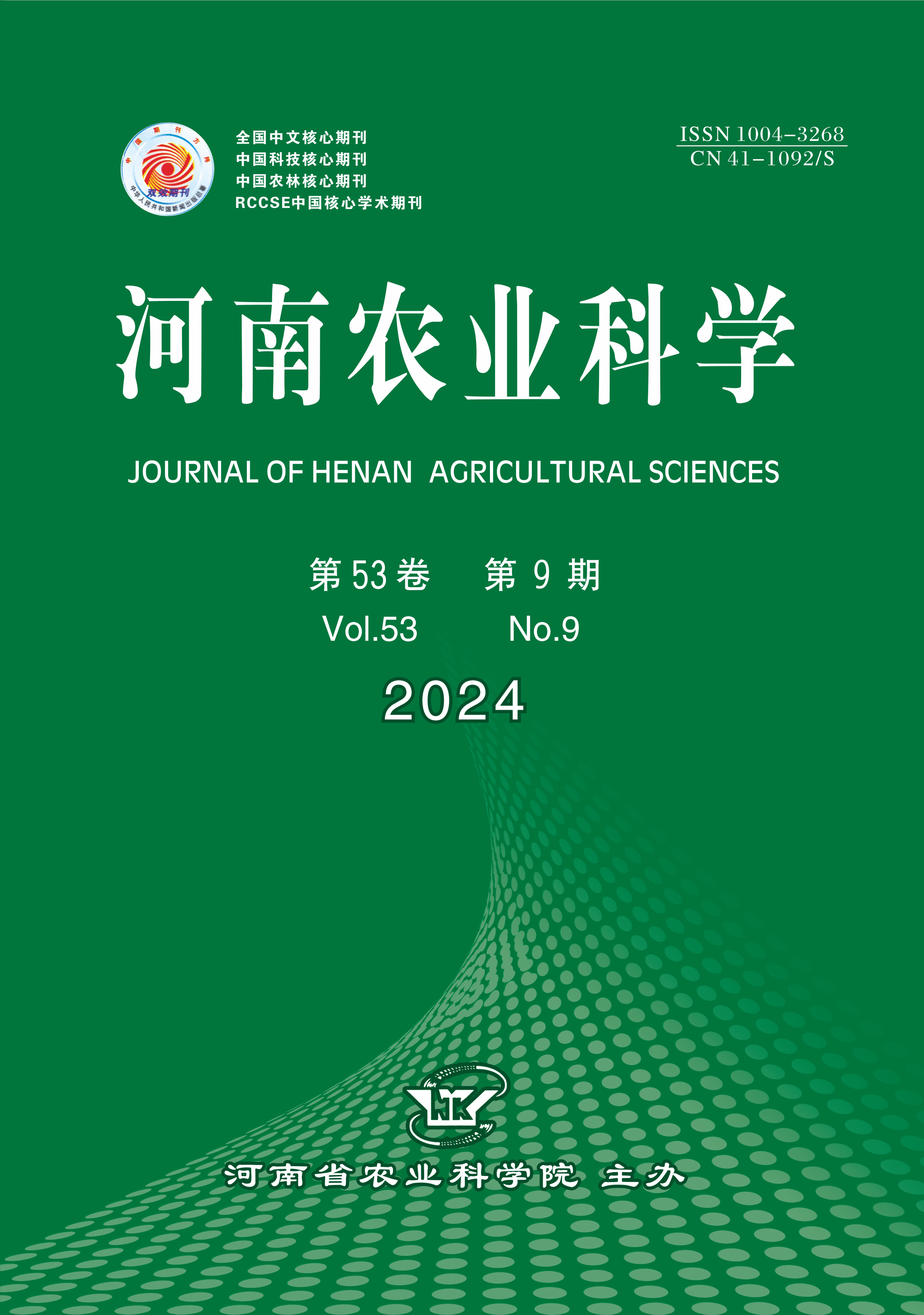-
Effects of One‑off Basal Application of Different Slow Controlled Release Urea on Yield and Nitrogen Utilization of Sorghum
- LIANG Xiaohong, CAO Xiong, ZHANG Ruidong, HUANG Minjia, LIU Jing, NAN Huailin, WANG Songyu
-
2024, 53(9):
28-36.
DOI: 10.15933/j.cnki.1004-3268.2024.09.003
-
 Asbtract
(
)
Asbtract
(
)
 PDF (1325KB)
(
)
PDF (1325KB)
(
)
-
References |
Related Articles |
Metrics
Taking mechanized sorghum variety Jinza 34 as material,under the condition of an equal nitrogen application rate of 150 kg/ha,six treatments were set up,which were no application of nitrogen fertilizer(CK),application of common urea(C1),application of slow release urea(C2),application of sulphur coated urea(C3),application of Junengwang urea(C4),and application of humic acid urea(C5).The effects of the one‑off basal application of different slow controlled release urea on agronomic traits,yield,nitrogen utilization efficiency and soil nitrate nitrogen accumulation were studied to provide a theoretical basis for improving nitrogen use efficiency of the one‑off basal nitrogen application and reducing soil environmental pollution.The results showed that compared with CK,the ear length,grain weight per ear,1 000‑grain weight and grain yield of sorghum of urea application treatments significantly increased by 8.32%—13.71%,21.05%—42.44%,5.24%—10.32%,16.08%—24.74%,and effective ear number increased by 5.09%—18.38%,respectively.The increases of sorghum yield of urea application treatments were largely due to the increases of grain weight per ear by path analysis.Compared to the C1 treatment,C3 and C4 treatments significantly increased grain weight per ear by 17.25% and 6.25%,1 000‑grain weight by 4.34% and 4.83%,grain yield by 7.46% and 5.84%,and aboveground nitrogen accumulation by 17.99% and 10.00%,respectively;increased nitrogen fertilizer use efficiency(NUE)by 88.03% and 48.89%,agronomic efficiency of nitrogen fertilizer(NAE)by 53.93% and 42.15%,partial productivity of nitrogen fertilizer(NPFP) by 7.47% and 5.84%,and nitrogen uptake efficiency(NUPE)by 18.00% and 10.00%,respectively.The grain weight per ear,nitrogen accumulation in grain,aboveground nitrogen accumulation,NUE and NUPE of C3 treatment significantly increased by 10.35%,7.24%,7.27%,26.88% and 7.27% compared with C4 treatment,respectively.Meanwhile,the nitrate nitrogen accumulation in the 0—60 cm soil layer of C3 treatment significantly decreased by 8.65%—31.30% compared with the other urea application treatments,and the residual nitrate nitrogen was mainly distributed in 0—40 cm soil layer.To sum up,under the conditions of this experiment,one‑off basal application of sulphur coated urea can significantly promote the nitrogen absorption of grains and aboveground part of sorghum,increase nitrogen fertilizer utilization efficiency and yield of sorghum,effectively decrease the accumulation of nitrate nitrogen in soil,reduce the risk of nitrate nitrogen washing to the deep soil layer,and is a suitable nitrogen fertilizer application method for promotion.
